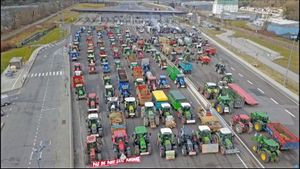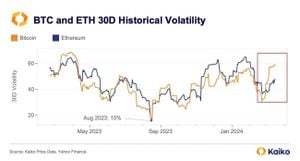The mining and consumption of rare earth elements (REEs) are prominent activities in China, particularly within southern regions where the Ionic-adsorption-type Rare Earth Mining areas (IREMs) are located. These areas are considered rich sources of REEs, which are indispensable for modern technology and sustainable energy solutions. Yet, the mining processes inflict serious environmental damage, including soil erosion, desertification, and contamination of water sources with heavy metals. Addressing these issues, recent research introduces Dicranopteris pedata, a resilient plant found thriving on the depleted soils of these mining areas, as a potential candidate for bioremediation.
According to a study published in Scientific Reports, the biomass from Dicranopteris pedata can be transformed through carbonisation to produce materials enriched with REEs, known as rare earth elements enriched carbonisation materials (REEs/C). These materials have shown promising efficiency for removing lead ions (Pb(II)) from wastewater, hinting at novel applications for rehabilitating polluted environments.
The study explored the characteristics of REEs/C created by heating Dicranopteris pedata biomass at different temperatures: 400°C, 600°C, and 800°C. The results were enlightening, with maximum lead ion removal efficiency recorded at 85.1% for materials processed at 400°C and 84.0% at 800°C. Meanwhile, the material processed at 600°C showcased significantly lower removal performance at just 67.0%. The differences were attributed to variations in the materials' structural and chemical properties, which were analyzed through various techniques.
The researchers highlighted how the carbonization process facilitates the formation of functional groups within the REEs/C. Specifically, the 400°C and 800°C samples exhibited a larger surface area filled with various chelative functional groups, thereby enhancing their ability to bind with lead ions present in wastewater. Importantly, the materials proved to be environmentally safe, as tests showed no leaching of REEs during the removal processes. “The REEs contained did not cause leaching during Pb removal, making it safe for environmental applications,” the authors affirmed.
This study serves as necessary guidance for utilizing plant biomass from mining areas, framing it not only as waste but potentially as a valuable resource for tackling hazardous waste challenges. By employing Dicranopteris pedata, which naturally accumulates REEs from the soil, the research effectively links waste management, pollutant remediation, and the sustainable use of natural resources.
Following the carbonization process, the researchers conducted extensive testing to assess how well these materials adsorbed lead ions. They found significant variations depending on the processing temperature, leading to insights about how to optimize material production for practical environmental clean-up applications. “This study generates new insights on how to use phytoextracted biomass containing REEs as valuable REEs/C materials,” they pointed out.
The research showcased the capacity of REEs/C prepared from Dicranopteris pedata for real-world applications, especially significant for mining areas plagued by heavy metal contamination like lead. The ability to transform biomass from potentially hazardous waste to effective remediation materials not only aids local ecosystems but also addresses global pollution challenges.
The potential applications are vast, especially considering the increasing focus on sustainable practices and ecologically sound solutions to manage industrial waste. Phytoremediation, combined with innovative carbonization techniques, could launch new pathways to restoring environments impacted by mining. “The process shows promise for contaminants remediation, ensuring both environmental protection and resource recovery,” concluded the authors.
Moving forward, the study suggests reevaluations and expansions of techniques to leverage plant-derived materials, like those from Dicranopteris pedata, for broader environmental and industrial applications. This innovative combination of bioremediation with resource recovery may be the key to advancing sustainable practices within the rare earth mining industry, paving the way for cleaner, safer environments.



